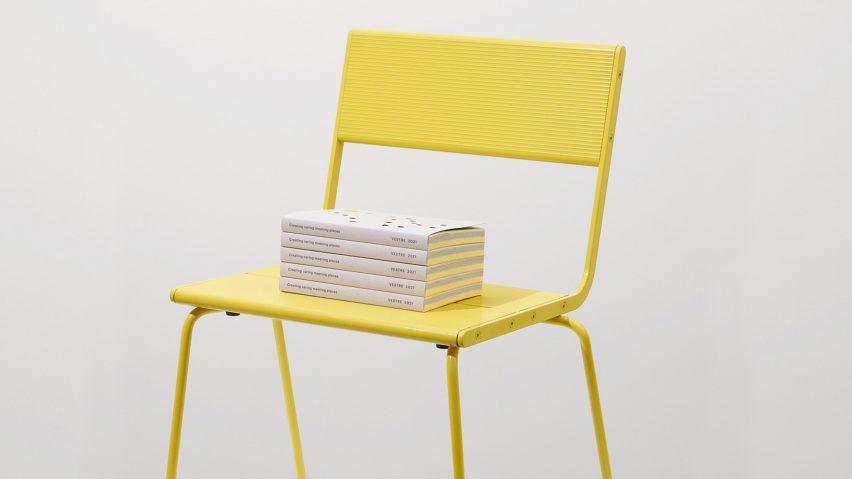Norwegian brand Vestre has announced that it will list CO2 emissions generated by each of its products alongside the price, in a bid to foster greater transparency and accountability in the furniture industry.
The company has created Environmental Product Declarations (EPDs) for its entire inventory, charting the amount of energy needed to create the outdoor furniture pieces and their carbon footprint.
These independently verified numbers will be introduced in the company's 2021 catalogue and subsequently rolled out across the entire website.
Vestre hopes that listing this information alongside measurements and materials will help customers to make more environmentally responsible purchase decisions.
"Citizens and purchasers can use their power to demand sustainable products but it's hard to put into practice without strong benchmarks on what is and what is not sustainable," the company's CEO Jan Christian Vestre told Dezeen.
"By certifying with ecolabels and displaying EPD values, brands can make that choice for the end-user a lot easier. Transparency means taking responsibility – only when we reach full accountability will a transition into a green and fair economy be possible."
Vestre experimented with the idea at the 2020 Stockholm Furniture & Light Fair, where the brand displayed its products in a re-useable installation that listed the carbon footprint of each item.
Created by Note Design Studio, it won the fair's award for best stand and received such a positive response that Vestre is now making "cradle to gate" EDPs public for all of its products.
This analysis spans everything from how the individual raw materials are extracted to the moment the finished furniture piece leaves the factory, including the energy used in production and any waste streams or transport emissions generated along the way.
One of the freestanding Folk benches for example, which Vestre created in collaboration with Swedish design studio Front, is responsible for 41 kilograms of CO2 and consumes 839 megajoules of energy.
In comparison, the April chair is smaller but made of steel instead of aluminium, meaning it has almost double the carbon footprint at 76 kilograms while needing 1,154 megajoules of energy to produce.
Although this process of tracing and cataloguing materials is initially labour-intensive, Vestre says that once all of this raw data is logged, its analysis can be run without much additional work.
"Considering the increasing quality of databases worldwide, this should not only be possible but a goal for every furniture producer," said Vestre.
"Vestre is the first furniture manufacturer in the world to record environmental impact in this way. We also do it for our entire range, not just a random selection. We do this to be open and to help both end clients and architects to make more informed decisions."
Vestre's EPDs don't trace what happens to a product once it reaches the end of its life. But manufacturers in other sectors, such as French flooring brand Tarkett, have already started following a more circular approach.
In a live Dezeen talk about architecture and the circular economy, the company's sustainability director for Europe, the Middle East and Africa Myriam Tryjefaczka explained that this includes looking at a product "from cradle to cradle".
"Everything starts with designing products for recycling and disassembly with good materials that are healthy for people and the environment," she said.

